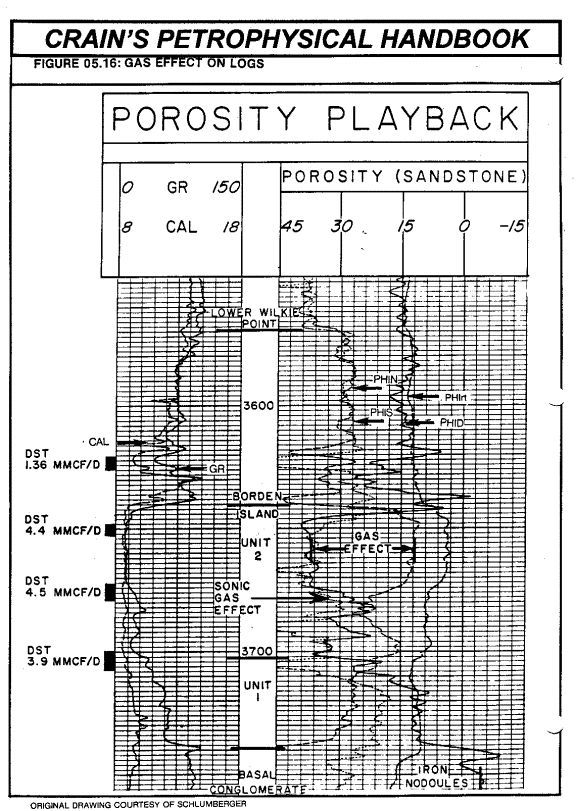|
 Correcting Log Values in Hydrocarbons
Correcting Log Values in Hydrocarbons
The values of density, neutron, and sonic logs recorded
in hydrocarbon bearing zones will usually be different than when
the zone is filled with water. Invasion of drilling fluid
into the reservoir displaces some of the hydrocarbons, so
the log readings represent neither the water filled nor the
in-situ hydrocarbon cases.
Editing to compensate for hydrocarbon effects will depend on what
the log data is to be used for. Reservoir properties calculations,
such as porosity and water saturation, no editing is done, but the
appropriate petrophysical analysis model is used. In calculation of
elastic properties, the analyst might want either water filled or
un-invaded values. Seismic modeling requires values for the un-invaded
reservoir. The raw log data are inappropriate for many typical
analytical problems.
Log
modeling, often called fluid replacement modeling, is used to
develop edited versions of the logs suitable for the specific
situation. Sometimes porosity or lithology are also modeled, so
fluid replacement is not the only change we might make. To generate a reasonable synthetic seismograph, the density and
sonic data must be reconstructed by calculating the log response
for an un-invaded zone. This is done by reversing the usual sonic
and density (shale corrected) equations with the correct fluid
terms to obtain the interpreted log readings.
Numerous modeling approaches are described in other Sections of this
Chapter.

Example showing gas effect on
density and sonic porosity (reading too high) and on neutron
and resistivity (reading too low).
|

